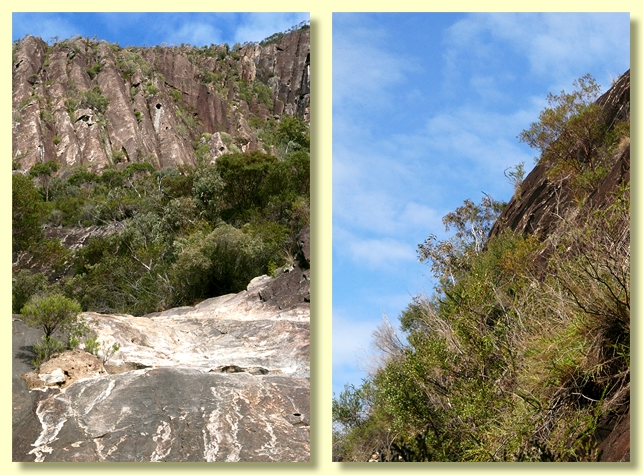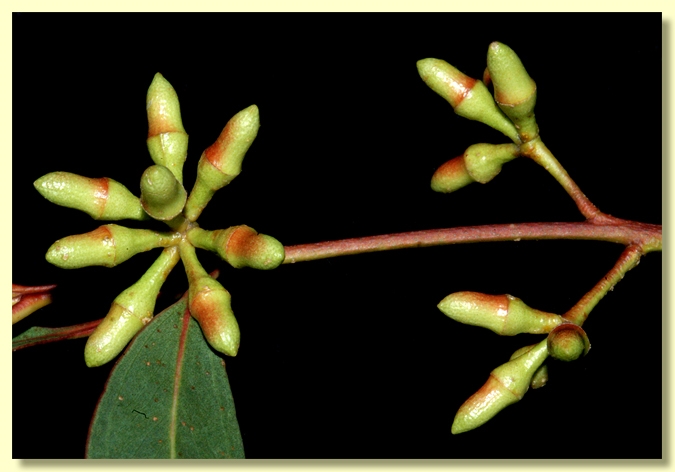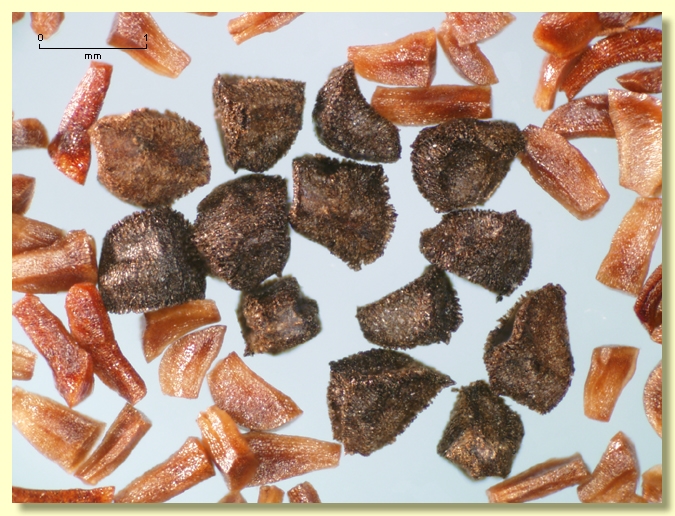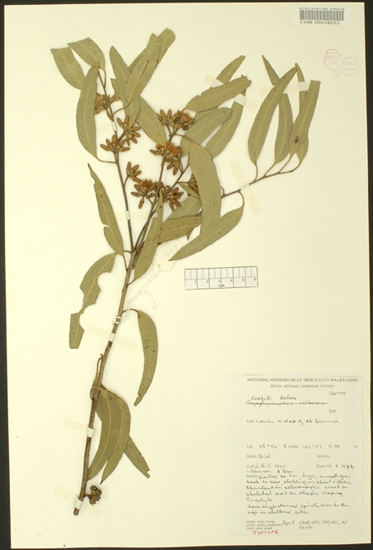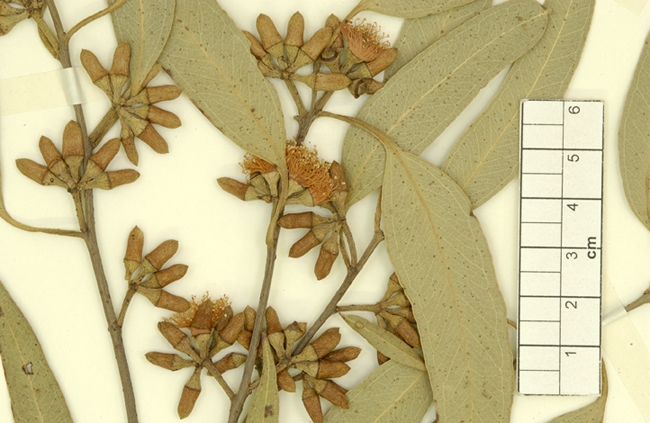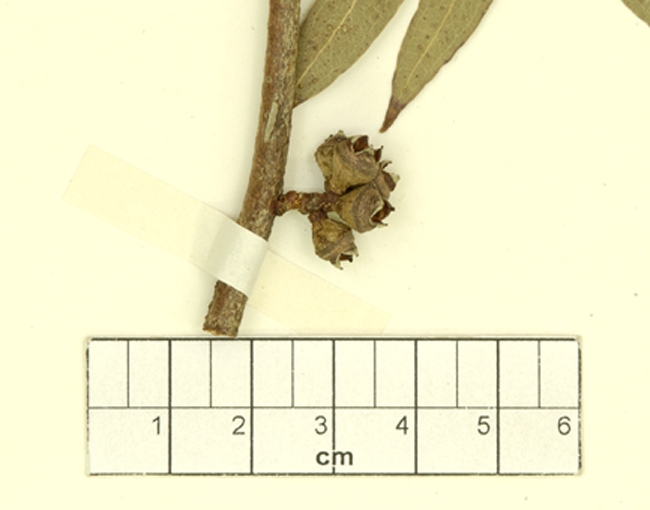Euclid - Online edition
Eucalyptus kabiana
Eucalyptus | Symphyomyrtus | Exsertaria | Erythroxylon
A mallee to 5 m, rarely a small tree to 10 m tall. Forming a lignotuber.
Bark normally smooth throughout, white to light grey to pink; sometimes with short stocking of grey fibrous rough bark on the larger plants.
Juvenile growth (coppice or field seedlings to 50 cm): stem usually square in cross-section; juvenile leaves always petiolate, alternate, lanceolate to broadly lanceolate, 6–8 cm long, 2–3 cm wide, dull, grey-green.
Adult leaves alternate, petiole (1.1)1.3–2.5 cm long; blade narrowly lanceolate to lanceolate to falcate, 6–15 cm long, 1–2.3 cm wide, base tapering to petiole, concolorous, dull or glossy, green, side-veins normally greater than 45° to midrib, moderately reticulate, intramarginal vein present, oil glands mostly island.
Inflorescence axillary unbranched, peduncles (0.5)0.7–1.4 cm long, buds 7, 9 or 11 per umbel, pedicellate (pedicels 0.3–0.5 cm long). Mature buds elongated-ovoid (0.9–1.2 cm long, 0.3–0.5 cm wide), the hypanthium short, green to creamy, scar present, operculum conical to horn-shaped (0.7–0.9 cm long), stamens erect, anthers cuboid to oblong, versatile, dorsifixed, dehiscing by longitudinal slits (non-confluent), style long, stigma tapered, locules 4 or 5, the placentae each with 6 vertical ovule rows. Flowers white.
Fruit pedicellate (pedicels 0.3–0.4 cm long), hemispherical, 0.3 cm long, 0.5–0.7 cm wide, disc broad and steeply ascending, convex to oblique, valves 4 or 5, strongly exserted.
Seeds usually black, 0.8–1 mm long, pyramidal or cuboid, edge with small teeth, hilum terminal.
Cultivated seedlings (measured at ca node 10): not grown at time of publication.
Flowering has been recorded in October.
A mallee currently known only from one locality just north of Brisbane in south-east Queensland, viz. Mt Beerwah in the Glasshouse Mountains. In the original description of this taxon, it was also reported to grow at Mt Coolum near Yaroombah Beach, just south of Coolum on the Sunshine Coast. All recent efforts to find E. kabiana on Mt Coolum have failed and it is now regarded as no longer growing there (fide Tony Bean, Queensland herbarium). E. kabiana is usually found in low woodland or mallee-heath on the steep sides of the mountain. It is characterised by its mallee habit, its smooth bark, its long acute operculum, often swollen near the base, its hemispherical fruit with strongly exserted valves and its lanceolate juvenile leaves.
Eucalyptus kabiana belongs to the group of red gums which is distinguished by having buds with the stamens mostly erect, fruit where the disc is united to the ovary roof and by the black, toothed, cuboid to pyramidal single-coated seed. Fifteen species belong to this group: E. amplifolia, E. blakelyi, E. chloroclada, E. dealbata, E. dwyeri, E. flindersii, E. gillenii, E. glaucina, E. infera, E. kabiana, E. nandewarica, E. nudicaulis, E. tereticornis, E. terrica and E. vicina.
Within the series, E. kabiana is very closely related to E. tereticornis and can only be separated by mallee habit (E. tereticornis is normally a large well-formed tree) and lanceolate juvenile leaves (ovate in E. tereticornis ). With its mallee habit, smooth bark, pedicellate buds and long narrow horn-shaped operculum, often swollen near the base, E. kabiana should not be confused with any other red gum.
Eucalyptus kabiana is listed as "Vulnerable" under the Australian Government Environment Protection and Biodiversity Conservation Act 1999 (EPBC Act). Further information may be found at this web address:
http://www.environment.gov.au/cgi-bin/sprat/public/sprat.pl
MORE ABOUT RED GUMS AND OTHER ASSOCIATED GROUPS
Eucalyptus kabiana: commemorates the Kabi Aboriginal people, who originally inhabited the Glasshouse Mountains.

